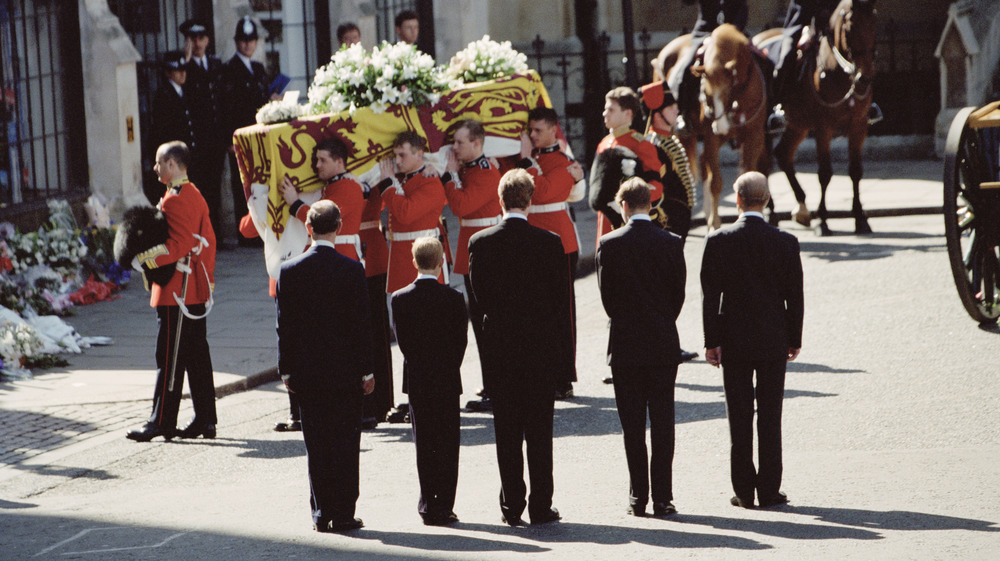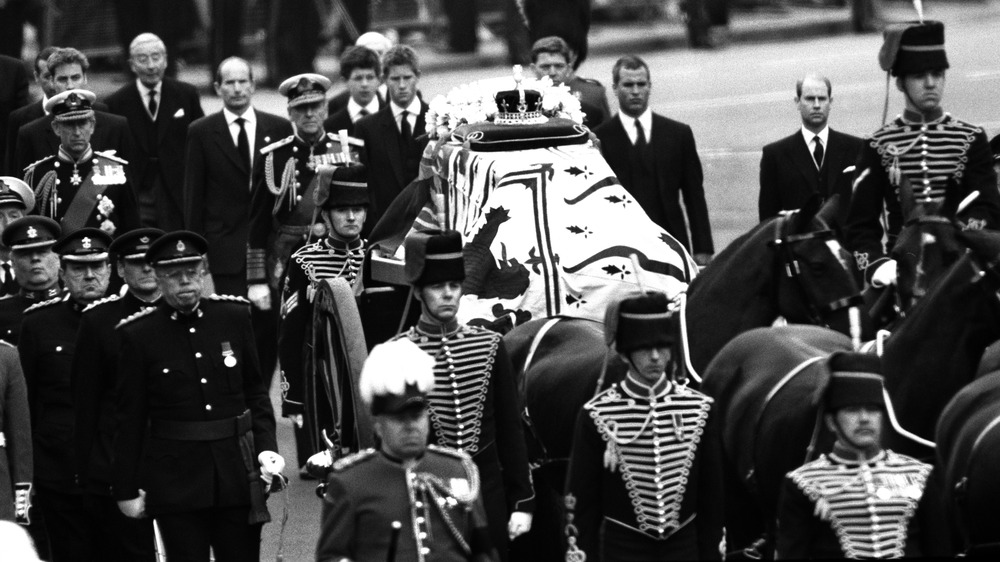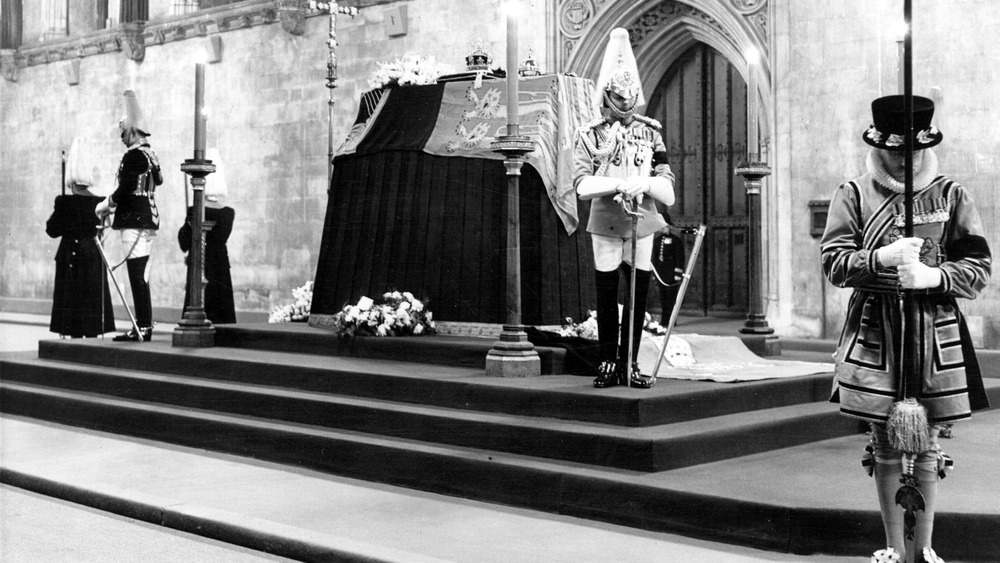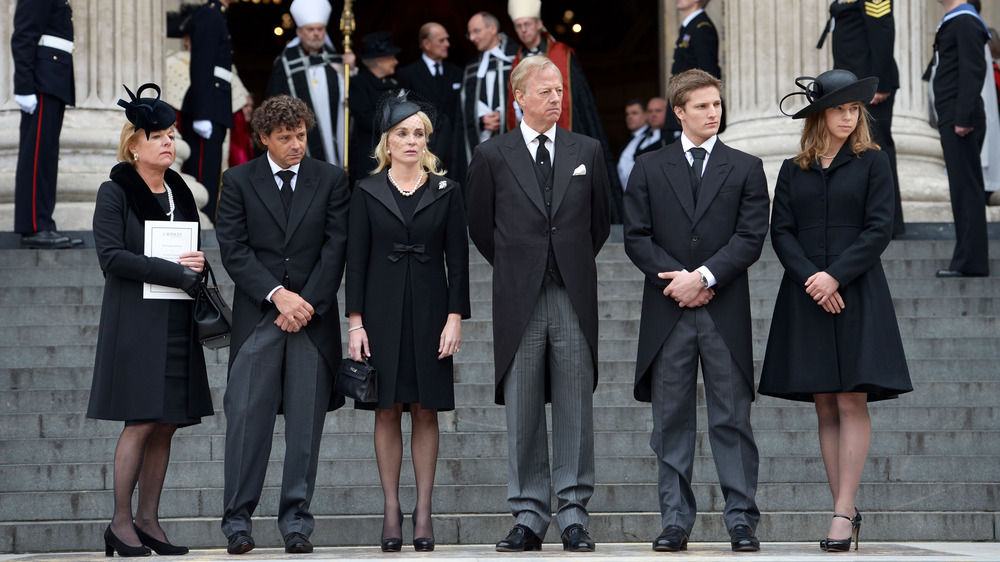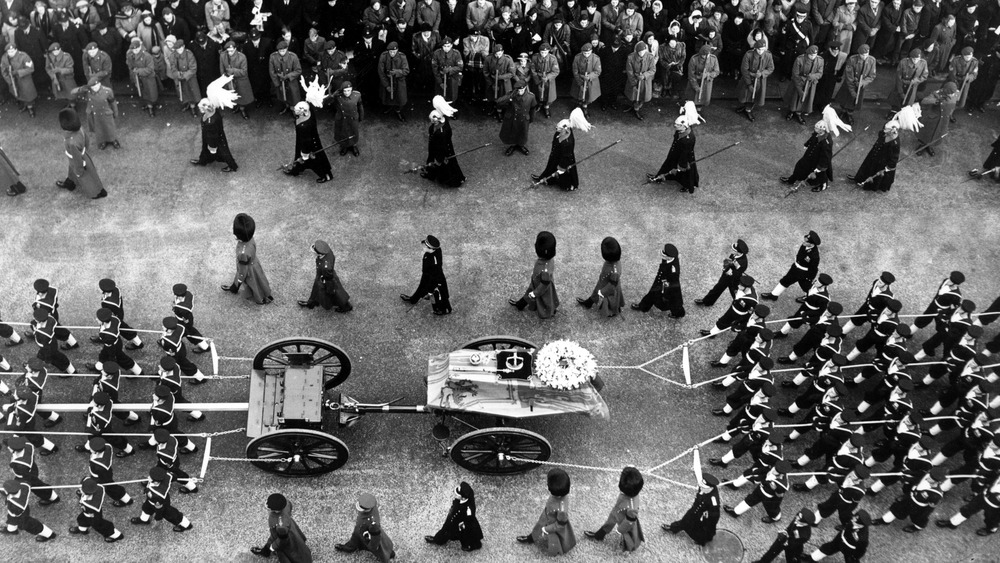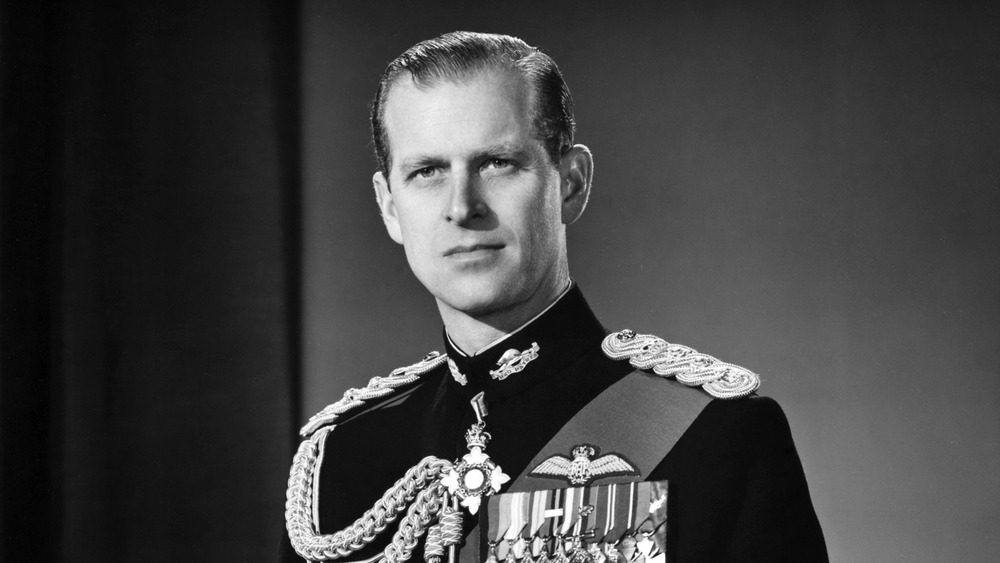The Rules Of A British Royal Funeral Explained
Just about everything that takes place within the British monarchy is tightly controlled and done according to strict protocols. Even things that take place behind the scenes, which the public will likely never see or know about, are done according to rules, traditions, and procedures that have been in place for centuries to protect the dignified image of the crown.
This is particularly true when it comes to public-facing events like weddings and funerals. Those who watched the royal wedding of Prince Harry and Meghan Markle a few years ago got a front-row seat for the rules and traditions that govern one of the more joyous aspects of monarchical life. And soon, viewers the world over will get to see the solemn face of the institution when Prince Philip, who died last week at the age of 99, is laid to rest following seven decades of marriage to the United Kingdom's sovereign.
Here are some of the strict rules that govern a British royal funeral.
Only monarchs get state funerals, lesser royals get ceremonial funerals
As with all things related to the British monarchy, what something is called is a matter of grave importance. And in the case of funerals, there's an admittedly-thin line between "state funerals" and "ceremonial funerals."
State funerals are usually reserved for monarchs only, according to The Independent. As such, the last state funeral for the crown to take place in the United Kingdom was in 1952, when King George VI, father of current monarch Queen Elizabeth, was laid to rest. Similarly, the next state funeral in Old Blighty won't take place until the passing of Her Majesty.
Lower-ranking members of the royal family are given what is known as "ceremonial funerals." Princess Diana was given such a funeral in 1997, as was Queen Elizabeth's mother in 2002. Ceremonial funerals are often sometimes awarded to non-royals, such as former Prime Minister Margaret Thatcher's in 2013, as The Guardian reported.
As a practical matter, however, the differences are subtle. Indeed, according to ITV, the main difference involves how the carriage carrying the coffin is transported. In a state funeral, it's pulled by sailors, while in a ceremonial one, it's pulled by horses.
Royals are expected to keep black clothes on-hand in case of unexpected death
The British have been wearing black at funerals for over a century, and indeed, to this day, for a British royal (or even a commoner) to wear any other color would be quite scandalous indeed.
However, when her own father died in 1952, then-Princess Elizabeth was effectively caught off-guard. She was in Africa at the time, and not expecting her father, King George VI, to die while she was away. Unfortunately, the monarch succumbed to illness, forcing his daughter, next in line to the throne, to return home — without black mourning clothes.
As The Express reported, the now-queen and her team returned to England, and she sat on the plane while waiting for a servant to show up with proper black attire, then changed clothes on the aircraft, lest she be publicly seen not wearing black.
These days, all members of the royal family are expected to keep a black outfit on-hand at all times when traveling, lest there be a repeat of what happened in 1952.
Clothing rules aren't just limited to the traditional black attire
You may remember that, during the royal wedding of Prince Harry and Meghan Markle, much attention was paid to the hats that adorned the heads of the fashionable ladies who attended the affair. Though the days of wearing hats in public in day-to-day life are largely gone, on both sides of the Atlantic, when it comes to British royal weddings and funerals, hats or fascinators (women's headwear adorned with feathers) are a must.
Further, according to Newsweek, Queen Elizabeth herself has also instituted some rules when it comes to attire at public-facing royal events. For example, women will be expected to wear dresses — black, of course — or skirts, with the hem falling just below the knee, as Her Majesty prefers.
Further, says royal expert Victoria Arbiter, there are to be no bare legs among women in the royal family, and they instead must wear tights.
"[It is] the only hard, steadfast rule in terms of what the queen requires," Arbiter said.
All royal activities stop for eight (or ten) days
According to Entertainment Tonight, when a member of the royal family dies, a period of mourning is invoked. In the case of the deceased being a lower-ranking member of the family, like Philip, the period lasts eight days. If it's the monarch herself (or himself), the period lasts ten days.
During this time, all royal activities are off. And in the unlikely event that someone in the family will be forced to make a public appearance and/or appear on-camera, expect them to be dressed in black, says royal expert Omid Scobie.
"If there are any appearances of [the royal family] in the days or weeks ahead, we will see them dressed appropriately in black. But across the board, you can really imagine that all royal engagements over the next eight days at least have been put to one side," he said.
Across the realm, according to Newsweek, flags will be at half-staff or half-mast, as the situation requires, throughout the period of mourning.
There will be differences when it comes to Philip's funeral
Prince Philip's funeral is likely to incorporate at least some of the ancient traditions that govern royal funerals in the U.K. However, quite a bit will have to be left out, for a couple of reasons.
Unfortunately for Philip, he died during the waning days of a global pandemic. As such, it won't do to have thousands of mourners lining the streets or in close proximity to one another, nor to have hundreds crammed into a building to view his body as it lies in state.
Further, according to BBC News, the former Duke of Edinburgh didn't care for a lot of "fuss," as he called it.
For now, Philip's funeral is scheduled for Saturday, April 17, at 3 p.m. BST (10 a.m. Eastern Time). Bucking tradition, he will not lie in state at Windsor Castle prior to being laid to rest. His coffin will be draped in his own standard — which is to say, a flag — which incorporates aspects of his national and familial heritage as well as his title.
Meanwhile, instead of lining the streets or leaving flowers, the members of the British public are asked to instead consider making a donation to a charity the duke supported.
